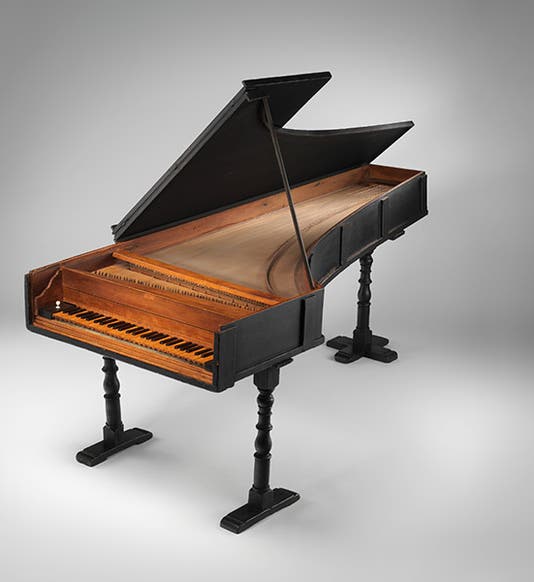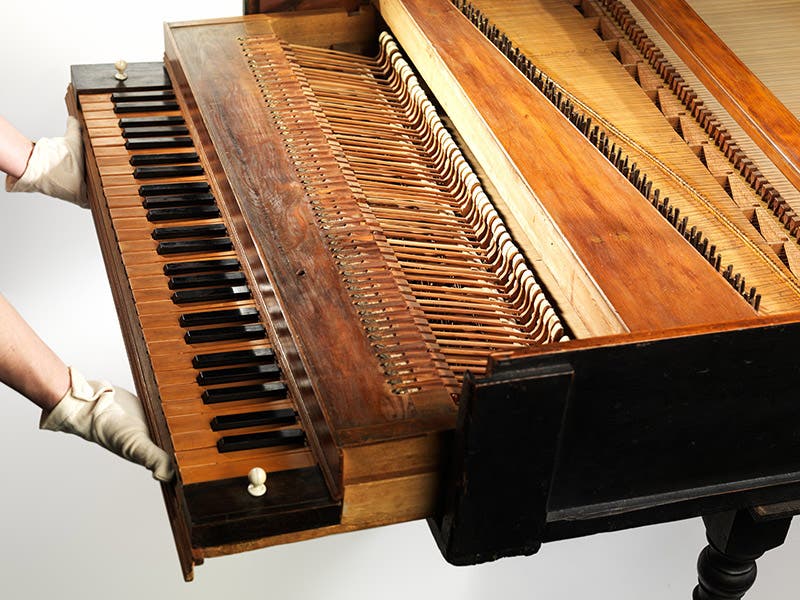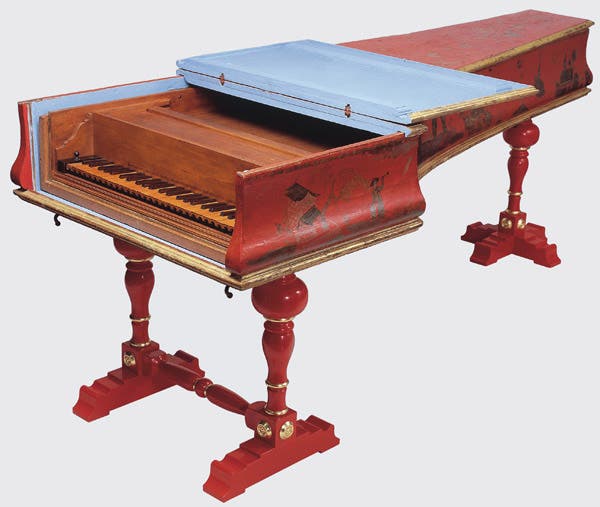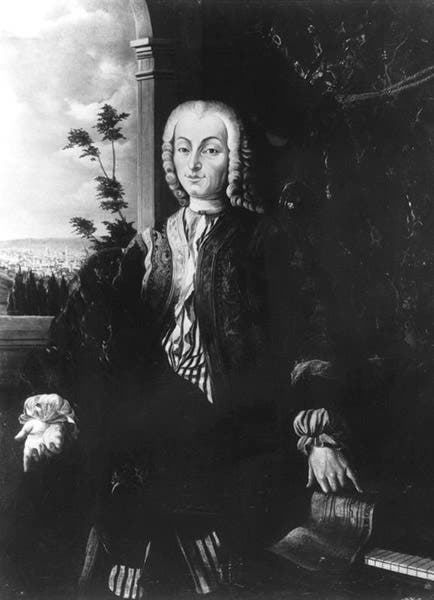Scientist of the Day - Bartolomeo Cristofori
Bartolomeo Cristofori, an Italian instrument maker, was born May 4, 1655. Cristofori, originally from Padua until he was recruited to Florence by Prince Ferdinando de’ Medici, was a skilled builder of harpsichords and clavichords, but he is best known for a new kind of instrument that he invented and fabricated around 1700: an “arpicembalo” (harp-harpsichord) that produced sounds both “piano e forte”. The instrument was soon called a pianoforte, and it was the direct ancestor of the modern piano.
The novelty of the piano lies in the way sounds are produced from the strings. In the harpsichord, the strings are plucked with a small quill; in Cristofori’s pianoforte, the strings are struck with a small leather covered hammer. Producing sounds with a hammer impelled by a key requires a considerable amount of ingenuity, because if the hammer is coupled directly to the key, it will stay in contact with the strings too long and dampen the overtones. Cristofori found a way to release the hammer just before the moment of impact so that it can strike and fall back unhindered and allow the strings to resonate freely. There were many other refinements necessary, to allow, for example, the key to be struck multiple times in rapid succession without interference from the mechanism, and Critofori solved every problem in an elegant fashion. The appeal of the pianoforte is that it responds much more directly to the player’s touch. Harpsichord strings produce the same level of sound whether you strike the key strongly or softly; a pianoforte could produce soft sounds and loud sounds, depending on how the key was struck. The action Critofori designed was complex and ingenious; this animated YouTube video shows how Cristofori’s escapement action worked, and you can see how the hammers are released from the keys before impact, and how the falling hammer returns the key to its up position.
This may not be science, but it is technology of a high order. The pianoforte is one of the great inventions of both of the centuries that it straddles. The cleverness of Cristofori in designing his original mechanism still draws the admiration of musicologists, who point out that the more complex action of the modern piano is still rooted directly in Cristofori’s inventiveness.
We do not know how many instruments he built, but three survive. One is in the Metropolitan Museum of Art, one is in the National Museum of Musical Instruments in Rome, and the third is in the Musical Instrument Museum in Leipzig. The Met instrument is the handiest one to view for those in the U.S., and the most photographed. Unfortunately, it has been heavily restored, and the sound it would now produce is quite unlike what it would have sounded like in 1726, when it was built. Because the original pianofortes had wooden frames and thinner strings, they sounded much more like harpsichords than modern pianos. It was not until metal frames were introduced in the early 19th century that heavier strings could be introduced, with a noticeable change in timbre.
Cristofori became well enough known in his own time to merit an oil portrait, which showed him in front of what is presumably one of his pianofortes. The portrait was destroyed in the Second World War, and only a monochromatic photographic survives, but that is far better than nothing. The diagram in his left hand supposedly shows the action of his pianoforte, but one can hardly make out any detail in the photo. Cristofori died in 1731, at the age of 75. He surely has other memorials in Florence or Padua, but I could not discover them.
Dr. William B. Ashworth, Jr., Consultant for the History of Science, Linda Hall Library and Associate Professor emeritus, Department of History, University of Missouri-Kansas City. Comments or corrections are welcome; please direct to ashworthw@umkc.edu.









